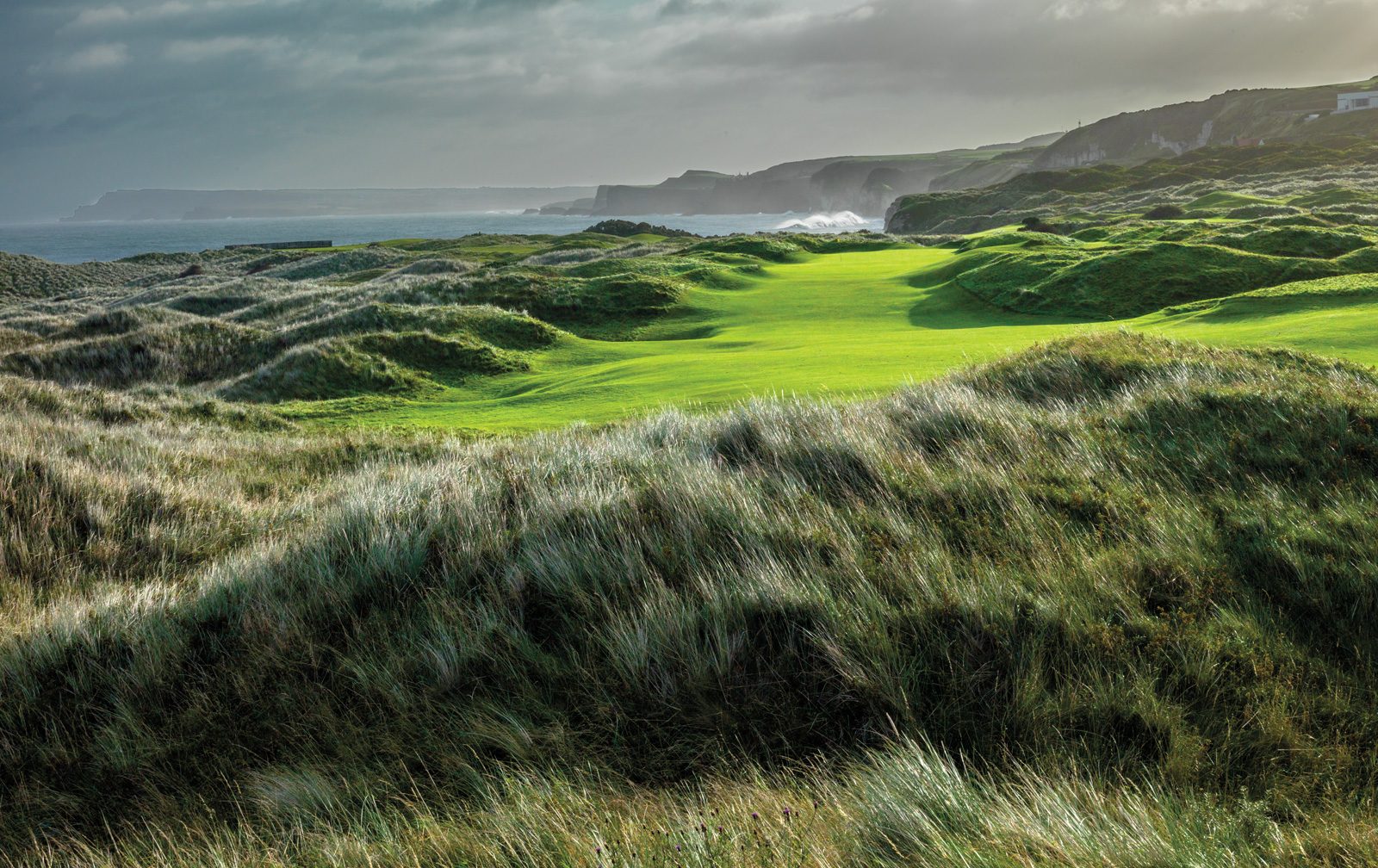
Photo by: Evan Schiller / golfshots.com
Everyone (every golfer, at least) knows of the island green at TPC Sawgrass Stadium Course’s 17th hole. Tough as it is, there are plenty like it, all of which pose problems if the wind is up or if your mind wanders. When faced with such a challenge, do your best to picture grass between yourself and the flag, breathe deep, and bind up your ears lest ye, like so many before ye, be tempted by the siren song issuing from beneath the waves: “Come splash with me, come splash with me, come splash with me…”
Ponte Vedra, Florida
The PGA TOUR estimates that more than 100,000 balls go into the water here each year (69 of them at last year’s PLAYERS Championship), but this 137-yard par-3 could have been even tougher, according to Alice Dye, wife of Stadium Course designer Pete Dye and an accomplished course designer in her own right, who’s credited with No.17: “They had to cover those fairways with sand because they were muck,” Alice told us in April, “and they’d found this great sand in that area, the best sand, and so they’d dug this huge hole where Pete had the 17th green planned. I was in Jacksonville staying in a motel; it wasn’t my favorite spot to go. It was muddy and had snakes, a horrible piece of property. But anyway Pete talked to me and he said ‘I’ve really got a problem, can you come out and look at this 17th hole and see if you can have an idea on what to do.’ So I came out and I said why don’t you fill up that great big hole with water? He did it—but then he took the back third of the green and sloped it right down into the water. I said ‘Pete, the tournament’s in March. March is windy. They’re going to turn on the TV and hear that the first group is still on the 17th tee; nobody can get off that green!’ So he took the back of that green and put it the way it is now, but he had that whole green going right back into the water.”
[Editor’s note: The idea of landing on the green here and then watching my ball roll down a steep ramp into the water… Allow me to offer a sincere “Thank you” to Mrs. Dye for this one.]
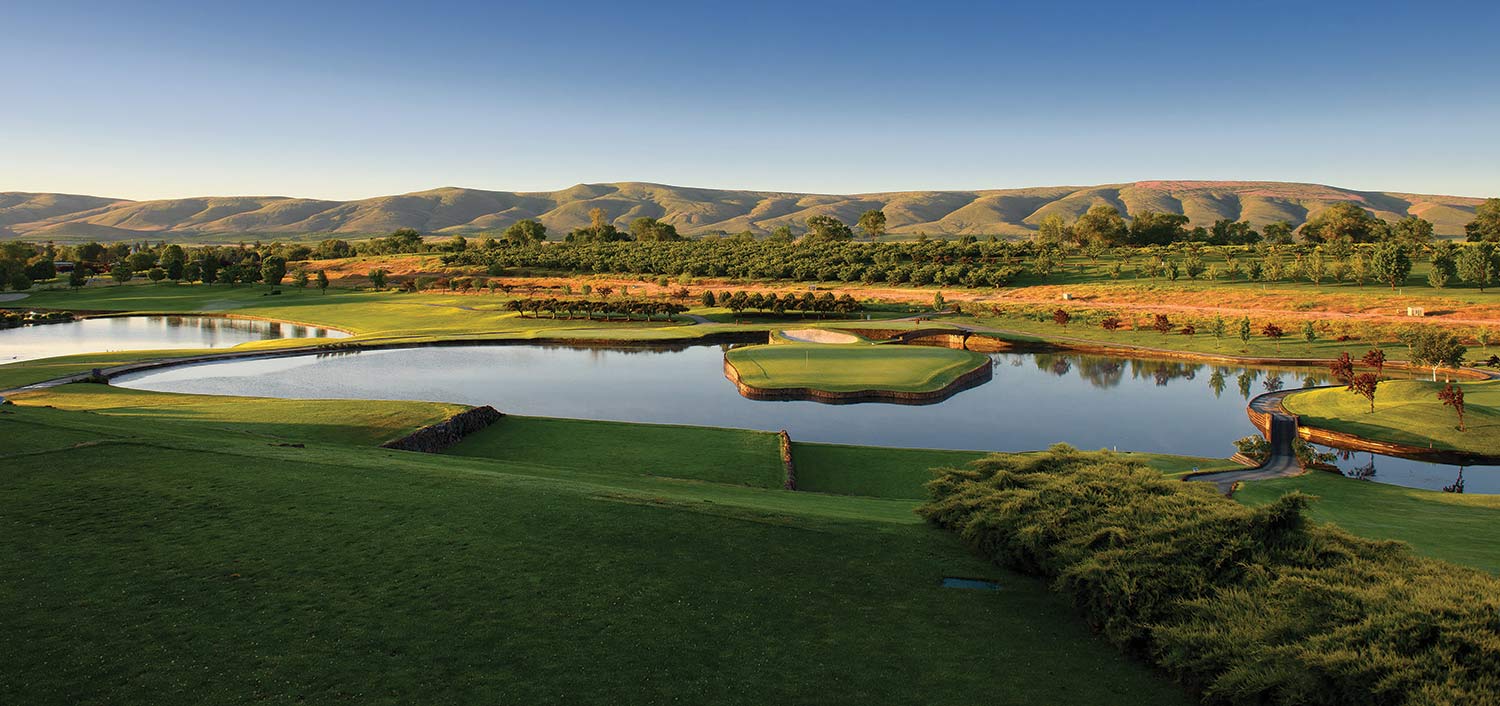
Yakima, Washington
Applesauce, apple strudel, apple dumplings, hot apple cider on a cold winter’s day, “an apple a day keeps the doctor away…” For millennia apples have been an incredibly pleasant part of life, and then this golf course had to go and mess it all up. It’s 180 yards to the giant apple-shaped green, and depending on how you hit it (assuming you hit it) you might be in for a roll or, perhaps, for a trip to the leaf-shaped bunker. If it treats you well you won’t mind the rest of the round, played among the pastoral lanes of an orchard full of Washington Delicious apples. But if it sends you bobbing then the 50-foot walk down the stem-shaped bridge and the rest of your apple-scented day will probably leave you longing for a cleaver and a pie dish. One bad apple does spoil the bunch, after all.
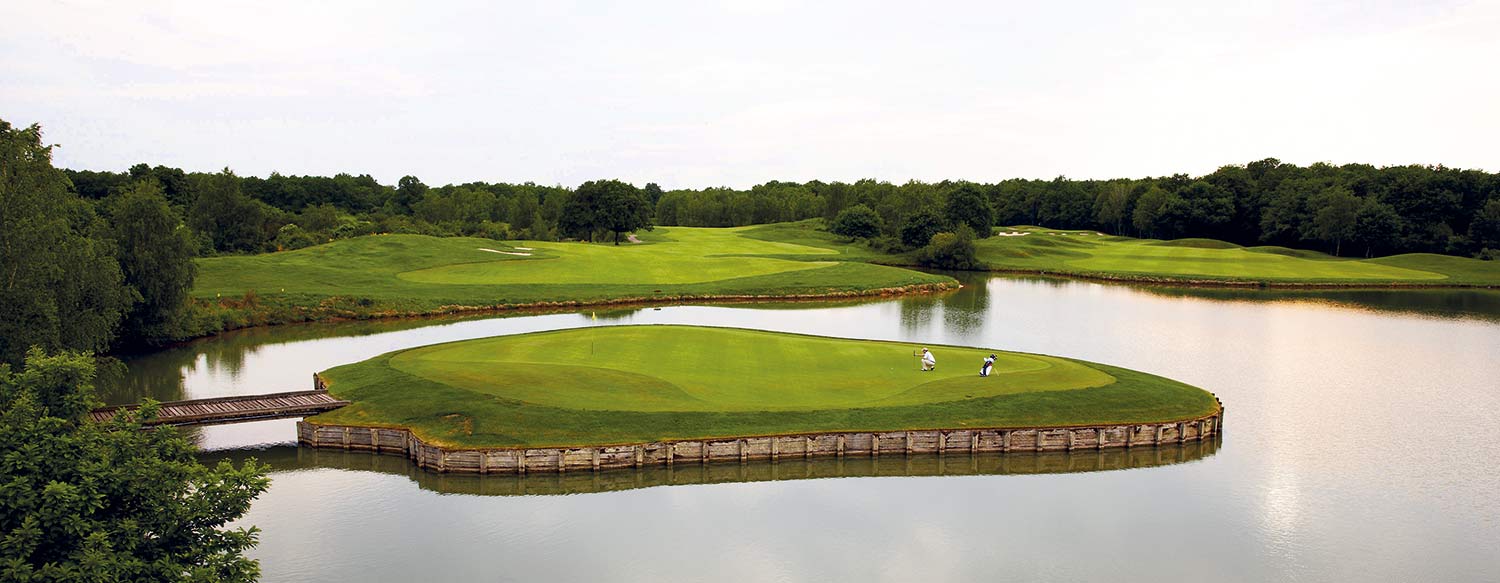
Saint-Laurent-Nouan, France
Founded by Baron Marcel Bich of the Bic empire, Les Bordes in the Loire Valley, central France, is an uber-luxury club built amongst the lakes and forest of an old royal hunting estate. Almost 50% of the holes feature water, with the long 14th finishing on a stunning island green (let’s call it an île verte) not far from some of the best wines on earth. Les Bordes is a long and demanding track, the course record being a 71 (one under par), but if someone asks you to play it with them, ne pas hésiter. Just smile, grab your clubs and say, «allons–y!».
Baltusrol Golf Club, New Jersey
Founded in 1895 by publisher Louis Keller, the major-hosting historical landmark is a fine example of Tillinghast design, but it’s believed that club pro George Low had a hand in the early 1900s’ layout and that he might have been responsible for No.10, then a 330-yard downhill par-4 surrounded by a shallow moat: what’s believed to be the game’s first official island green. Curiously, pros sometimes used “floaters” at the time, floating golf balls that could be played from the water, which is just what Walter Hagen used during at least one Baltusrol tournament, according to former member Fritz Leuders. Quoted by Brendan Prunty in a May, 2011 edition of New Jersey’s The Star-Ledger newspaper, Leuders describes Hagen taking off his shoes and socks and playing his floater out of the water to get a birdie three. “I will never forget this as long as I am able to think about golf,” Leuders concludes. A Low associate named Herbert Strong went on to design golf’s next island green, No.9 at Florida’s Ponte Vedra Club in 1936, which itself is said to be among the inspirations for Pete and Alice Dye’s icon down the street at TPC Sawgrass.
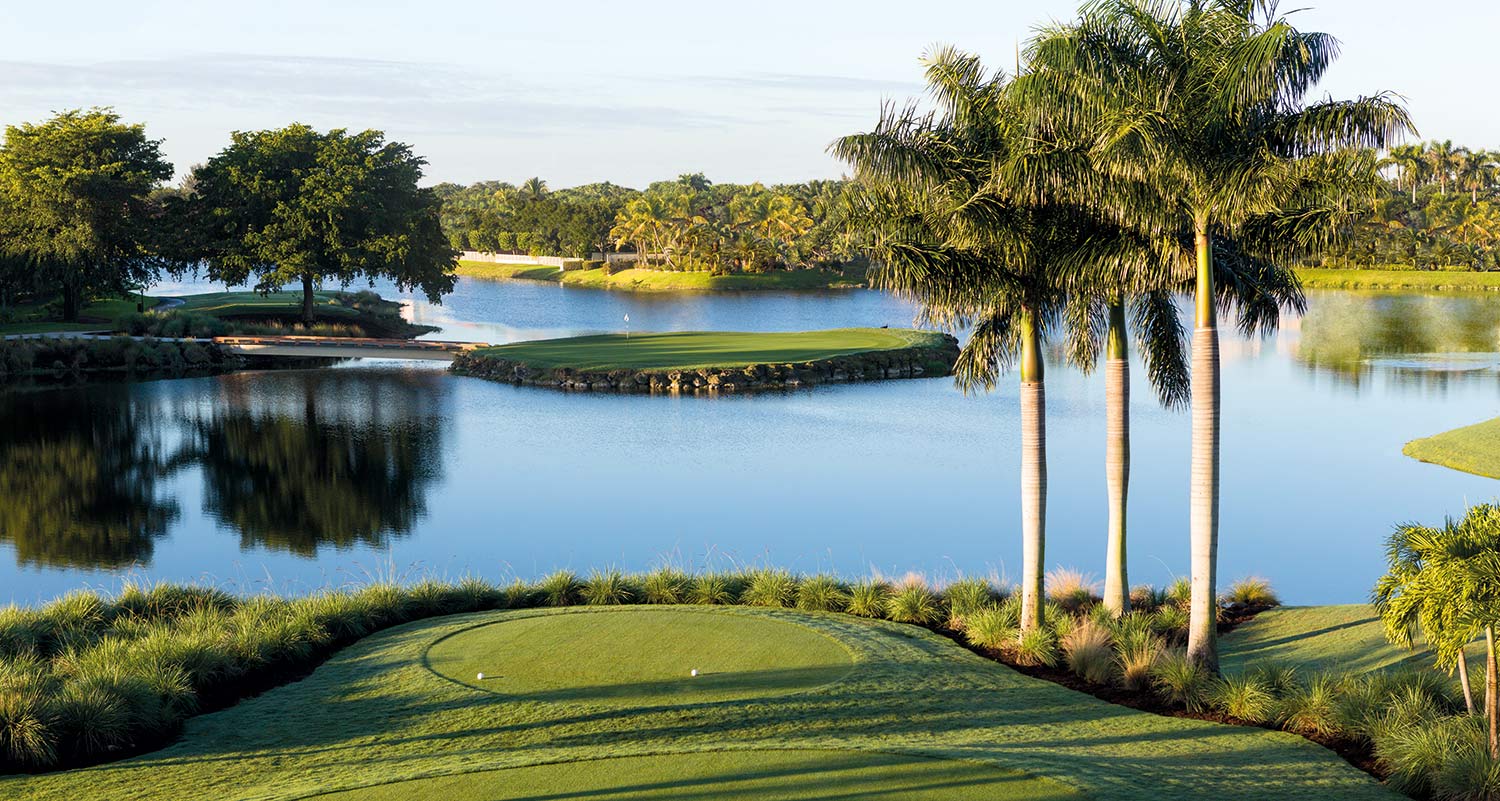
Miami, Florida
The Silver Fox course at Trump National Doral is a tough proposition with water coming into play on 17 of the 18 holes, and nowhere more so than the 7th hole with its island green. Reminiscent of the 17th at TPC Sawgrass, with a small bunker at the front, if anything, this one-shotter looks even more intimidating with the tee raised bringing the water even more into sight and mind. The green slopes from back to front so the safe shot to the back of the green results in a deadly quick downhill putt.
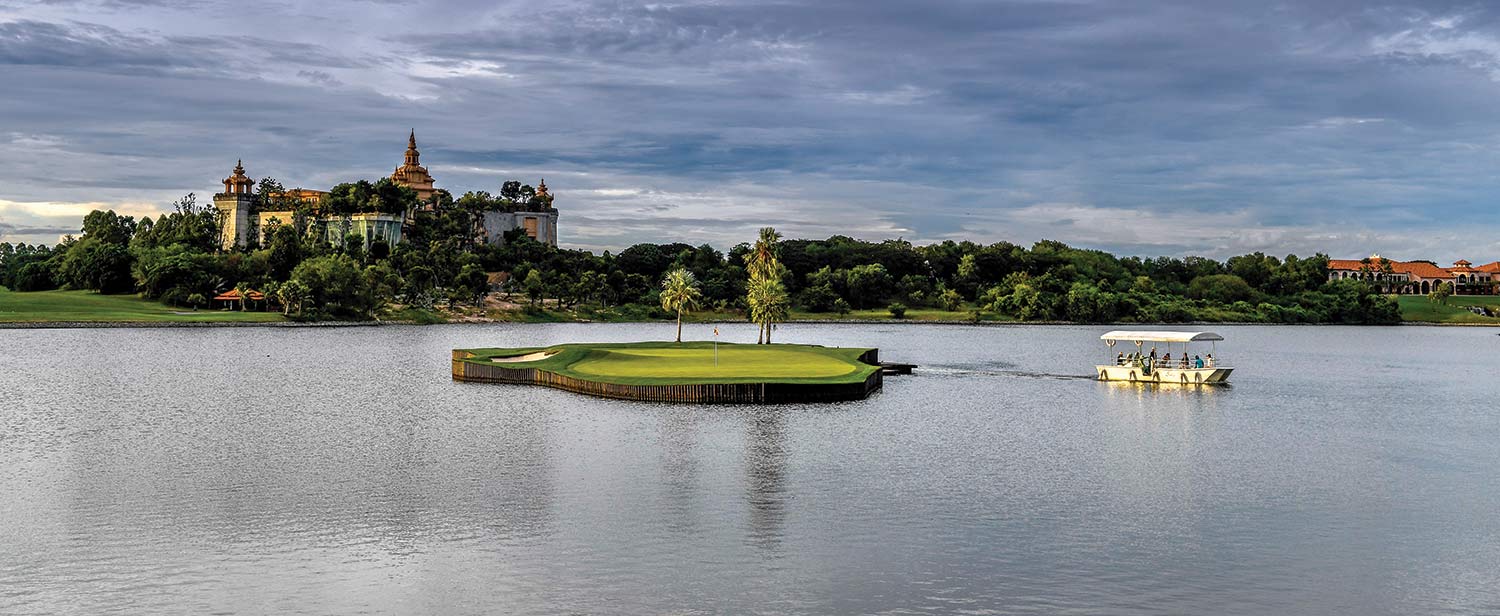
Chonburi, Thailand
An island (and a floating one at that), is there another like it in all of Asia? We don’t think so. In their early days the course designers worked with Pete Dye, whose “marooned” style seems to take with former apprentices. Credit (or curse) Lee Schmidt of Schmidt-Curley Design with the 145-yard par-3 island target, accessible only by boat. Sergio Garcia made the crossing in fine form in 2013 on his way to winning the Thailand Golf Championship; he’d found water twice at TPC Sawgrass’ 17 in that year’s PLAYERS, which is, perhaps, why the “El Nino International Restaurant” is at Chonburi and not in Ponte Vedra.
Follow Us On


| Cookie | Duration | Description |
|---|---|---|
| cookielawinfo-checkbox-analytics | 11 months | This cookie is set by GDPR Cookie Consent plugin. The cookie is used to store the user consent for the cookies in the category "Analytics". |
| cookielawinfo-checkbox-functional | 11 months | The cookie is set by GDPR cookie consent to record the user consent for the cookies in the category "Functional". |
| cookielawinfo-checkbox-necessary | 11 months | This cookie is set by GDPR Cookie Consent plugin. The cookies is used to store the user consent for the cookies in the category "Necessary". |
| cookielawinfo-checkbox-others | 11 months | This cookie is set by GDPR Cookie Consent plugin. The cookie is used to store the user consent for the cookies in the category "Other. |
| cookielawinfo-checkbox-performance | 11 months | This cookie is set by GDPR Cookie Consent plugin. The cookie is used to store the user consent for the cookies in the category "Performance". |
| viewed_cookie_policy | 11 months | The cookie is set by the GDPR Cookie Consent plugin and is used to store whether or not user has consented to the use of cookies. It does not store any personal data. |